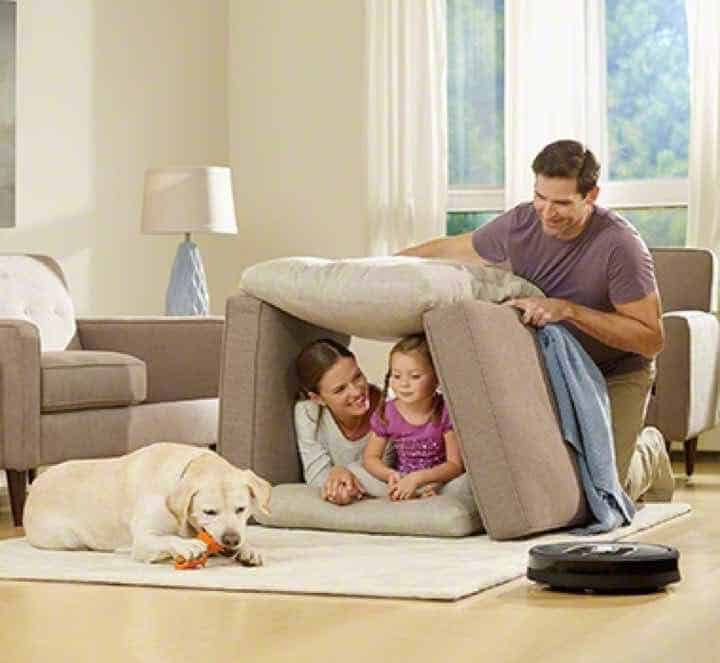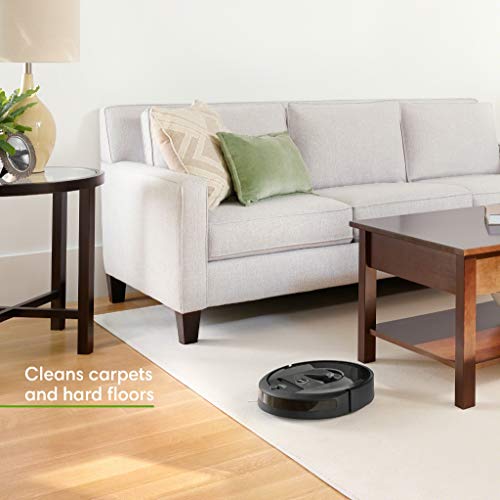The iRobot Roomba brand has become synonymous with robotic vacuum cleaners and are more popular than ever. It’s easy to see why; the benefit of being able to set a Roomba off and sit back and relax while it vacuums your house is very appealing.
There’s a wide range of Roomba models, all offering quality vacuuming power with a range of features and functionalities for different price points. If you’re thinking of getting a Roomba, chances are there’s a model out there that is right for you.
Despite all the pros, one thing most of us wonder is just how loud is a Roomba? The majority of Roomba models are around 60-70 decibels, which isn’t noisy at all. We’ll look at specific measurements for the various models and see where they land on the noise spectrum. Keep in mind that all vacuums make noise, robot or not.
All About The Decibels
To understand how loud a Roomba is, we must first understand how sound is measured. The unit of sound is called decibels (dB).
- Normal conversations are around 60 dB
- A washing machine and a dishwasher are around 70dB
- A leaf blower, and some conventional vacuum cleaners, are around 80dB.
Most Roombas are around 60-70 dB, although not all models are the same. We will compare the Roombas and just how loud some of the leading models are when they are in use.
- Read more about How to Make a Roomba Quieter.
Here’s a quick and handy chart for easy reference.
| iRobot Roomba Model | Decibels (dB) |
|---|---|
| Roomba 614 | 68 dB |
| Roomba 670 | 65 dB |
| Roomba 671 | 58 dB |
| Roomba 675 | 65 dB |
| Roomba 690 | 66 dB |
| Roomba 692 | 66 dB |
| Roomba 694 | 65 dB |
| Roomba 805 | 68 dB |
| Roomba 890 | 68 dB |
| Roomba 960 | 65 dB |
| Roomba 980 (Tied for Loudest) | 70 dB |
| Roomba 985 | 68 dB |
| Roomba E5 (5150) | 65 dB |
| Roomba i3 EVO | 65 dB |
| Roomba i3+ EVO | 65 dB |
| Roomba i4 EVO | 65 dB |
| Roomba i4+ EVO | 65 dB |
| Roomba i6+ | 65 dB |
| Roomba i7 | 62 dB |
| Roomba i7+ | 62 dB |
| Roomba i8+ | 62 dB |
| Roomba j6+ | 55 dB |
| Roomba j7 | 55 dB |
| Roomba j7+ Quietest Roomba | 55 dB |
| Roomba Combo j7+ | 64 dB |
| Roomba s9 (Tied for Loudest Roomba) | 70 dB |
| Roomba s9+ (Tied for Loudest Roomba) | 70 dB |
Roomba Models and Series
Roomba 600 Series
Most 600 series Roomba vacuums operate at a similar volume, around 65-68 dB (or about the same volume as a loud conversation).
The entry model Roomba 614 is one of the louder models of Roomba at about 68 dB. This is roughly the same as the Roomba 690, which measures around 66 – 68 dB. Similarly, the Roomba 675 operates at a volume of 65 dB.
One notable exception is one of the most popular Roomba models, the Roomba 671. The Roomba 671 is the quietest Roomba, registering a volume of just 58 dB. This makes it quieter than its main competitor, the 670, which is 65 dB when it is being used.
Roomba 800 Series?
Roombas in the 800 series are slightly louder than those in the 600 series, due to their slightly larger size. The Roomba 805 measures a volume of 68 dB when it’s in use.
The more featured 890 model measures at the same sound level but packs in a lot more features. The 890 has Wi-Fi, voice command, remote control, and a full bin indicator.
Roomba 900 Series
The 900 series models offer even more features for owners, including the innovative visual simultaneous localization and mapping (vSLAM) navigation system.
Despite the extra hardware, the Roomba 960 still measures out at only 65 dB, making it comparable to most of the models in the 600 series.

The larger Roomba 980, with its extra suction power, is one of the louder models of Roomba available and comes in at the 70 dB mark.
Similarly, the Roomba 985 measures around 68 dB, thus making these two models two of the louder options available. Although in the grand scheme of things, this isn’t a hefty increase in volume.
Special Models: Roomba E5, i7, and s9
As well as the 600, 800, and 900 series, there are also additional Roomba models, such as the E5, the i7, i7+, s9, and s9+.
The Roomba E5 comes in the middle of the sound range at about 65 dB.
The high-end Roomba i7 and i7+ are quieter models, measuring just 62 dB, despite all its additional functionality. This makes it quieter than the models in the 600 series (except for the Roomba 671), the 800 series, and the 900 series.
The top of the line Roomba s9 and s9+ have been described as “the smartest, most powerful robot vacuum yet.” They come in at the top of the range at about 70 dB, making it comparable volume-wise with the Roomba 980.
The s9 and s9+’s louder volume is due to the suction power that’s 40 times more powerful than the 600 series. That’s 40x the suction power, but not even 1.1x or 10% louder than the average 600 series model. I’d say that’s a pretty good trade-off for better cleaning.
Final Thoughts
All in all, there isn’t too much difference between how noisy different models of Roombas are, due to the fact that they are all made of similar technology and motors.
From the models reviewed here, the Roomba 671 and the Roomba i7/i7+ are the quietest Roomba models. These models are the best for those who prioritize a quiet robotic vacuuming experience.
At the other end of the scale, the Roomba 980 and the Roomba s9/s9+ were the loudest. However, the additional power and functionality these models offer negate the disadvantages of a relatively loud operating volume.
That being said, it’s important to point out that using a Roomba on different types of flooring can impact how noisy it is. For example, using a Roomba on the carpet is typically quieter than on hardwood floors.
- Related: How well does a Roomba clean carpet?
Overall, compared to conventional vacuum cleaners, Roombas offer a quieter vacuuming experience, with most models being about as loud as a normal conversation.
And if the thought of sitting on your sofa watching TV with a Roomba cleaning in the background doesn’t sound too relaxing, it’s always possible to start the Roomba when leaving the house for some time. You also don’t have to run the Roomba every day if you don’t want to.
If the vacuum noise affects you, you can also run the Roombas when you’re not at home by controlling it through the iRobot Home app (for certain models). If you have pets, you may want to put them outside when the Roomba is working or you might end up with a Poopocalypse. We definitely don’t want that!


